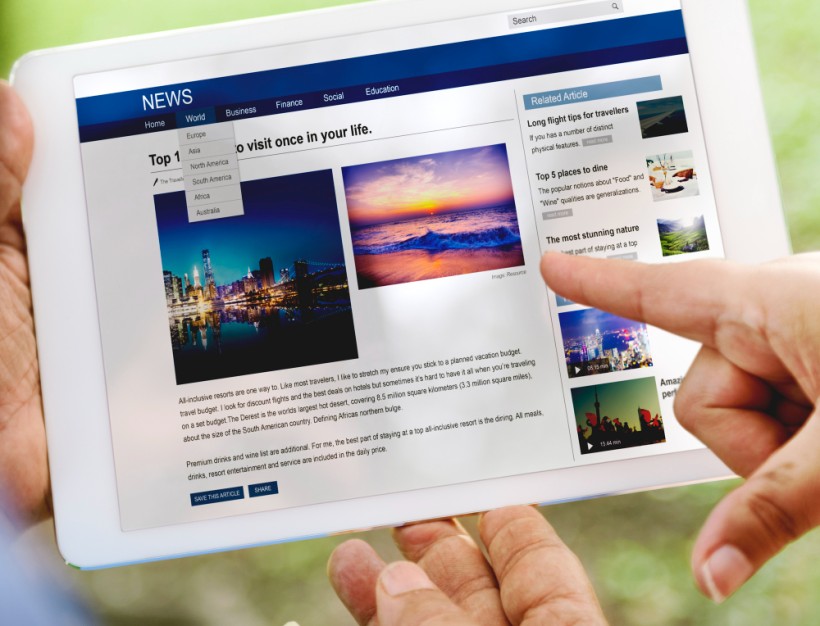Having a LinkedIn page or a company page is a good start, but let’s be honest—it’s not a strategy. Posting the occasional job opening or sharing a company milestone might check the “LinkedIn activity” box, but it doesn’t drive meaningful results.
If you’re not using LinkedIn to fuel your B2B marketing, build authority through thought leadership, or create demand for your services, you’re missing out on one of the most effective tools in your business arsenal.
Here’s everything you need to know about crafting a LinkedIn business strategy that supports your goals and drives real impact.
Why LinkedIn is a critical part of your business strategy
LinkedIn is no longer just a platform to post résumés or connect with colleagues. It’s a platform that businesses, small and large, are leveraging to:
✔ Generate high-quality leads through targeted outreach.
✔ Build brand awareness with the right audience.
✔ Create demand for products or services through LinkedIn ads and sponsored content.
✔ Nurture relationships through thought leadership and engagement.
Here’s how LinkedIn can be embedded into your broader business strategy:
1. LinkedIn as a lead generation tool
LinkedIn’s unmatched ability to target specific industries, roles, or even companies makes it a great social platform for B2B marketing.
For example, with LinkedIn Sales Navigator, you can create lists of decision-makers—like CEOs, marketing managers, or project heads—based on industry, company size, or geographic region. This tool takes the guesswork out of prospecting and ensures you’re reaching the right people.
✔ Example: One mobile development company using LinkedIn Sales Navigator saw a 30% boost in qualified leads in just 90 days.
2. LinkedIn for hiring and employee advocacy
87% of recruiters use LinkedIn to find candidates. But LinkedIn isn’t just for sourcing resumes. It’s also a space where businesses can show off their culture and engage with potential hires.
A strong LinkedIn business strategy prioritizes:
- Building a robust company page that highlights your mission, values, and achievements.
- Encouraging employees to share updates, milestones, and behind-the-scenes moments.
- Highlighting how job applicants can accelerate their career development at your company.
When your team becomes active on LinkedIn, it amplifies your company’s credibility. Think of it as employee advocacy in action.
3. LinkedIn as a brand-building engine
Every like, comment, and post on LinkedIn contributes to your brand awareness. Your company doesn’t need to rely solely on its company page—your employees’ LinkedIn activity often generates 10x more visibility.
A strong LinkedIn marketing strategy focuses on:
- Promoting thought leadership through consistent, value-driven posts.
- Using LinkedIn Thought Leader Ads to distribute key messages to a larger audience.
- Leveraging content marketing tactics, such as storytelling, videos, and case studies.
✔ Example: A B2B consulting firm ran LinkedIn sponsored content campaigns to promote thought leadership articles, resulting in 25% more inbound leads.
Building a LinkedIn business strategy from the ground up
Step 1: Optimize your profiles and company page
Start with the basics. Every team member needs a professional LinkedIn profile optimized with the right keywords. These profiles act as landing pages for potential customers, partners, or hires.
For companies, an engaging company page should showcase:
- A clear “About” section highlighting your mission and expertise.
- Visual assets like videos, banners, or featured posts. (We create these designs for companies at Column.)
- A regularly updated feed with relevant and engaging content.
(P.S. Get help optimizing your LinkedIn profile today.)
Step 2: Create a content strategy
Content drives engagement, and engagement drives trust. A winning LinkedIn content strategy includes:
- Educational posts: Share industry tips, how-to guides, or answers to common customer questions.
- Thought leadership: Highlight leadership insights, trends, or data-backed opinions. See our guide to thought leadership strategy.
- Culture-focused content: Show what makes your team unique.
Don’t forget to diversify formats:
- LinkedIn Live videos for webinars or interviews.
- Carousel posts to present step-by-step guides.
- Blog posts repurposed as LinkedIn articles.
Step 3: Leverage LinkedIn ads
Investing in LinkedIn advertising can help you:
- Promote sponsored content to expand reach.
- Use lead generation ads to capture leads directly from LinkedIn.
- Launch InMail campaigns to deliver targeted, personalized messages.
✔ Example: A social media marketing agency we worked with spent $3,000 on LinkedIn ads and landed 20 high-ticket clients.
Step 4: Engage through LinkedIn groups
Active participation in LinkedIn groups is a low-cost, high-impact strategy for building thought leadership as a founder or marketer. By contributing value to group discussions, you position your brand as an authority in your niche.
✔ What works in groups:
- Posting answers to frequently asked industry questions.
- Sharing relevant content marketing pieces that spark conversation.
Step 5: Use analytics to refine your LinkedIn business strategy
LinkedIn analytics helps you measure what’s working—and what isn’t. Key metrics include:
- Engagement rates (likes, comments, shares).
- Impressions and click-through rates on ads.
- Follower growth and post reach.
By tracking performance, you can fine-tune your strategy to achieve better results. Read more about the content marketing metrics we recommend tracking.
Common mistakes in LinkedIn strategies (and how to fix them)
🚫 Mistake #1: Posting generic or sales-heavy content.
✔️ Fix: Use relevant content that offers value without being overly promotional.
🚫 Mistake #2: Treating LinkedIn like Instagram.
✔️ Fix: Focus on professional, insights-driven posts in addition to memes and personal updates.
🚫 Mistake #3: Ignoring engagement.
✔️ Fix: Respond to comments, tag contributors, and participate in discussions.
Measuring the ROI of your LinkedIn business strategy
Here’s how to evaluate your strategy’s success:
- Sales impact: How many leads and deals are coming directly from LinkedIn?
- Brand visibility: Are your company page and content strategy reaching the right audience?
- Engagement: Are people interacting with your LinkedIn ad or thought leadership posts?
✔ Example: A web development company tracked LinkedIn as their top traffic source in Google Search Console, with 30% of all website conversions coming from the platform.
Ready to unlock LinkedIn’s full potential?
A well-executed LinkedIn business strategy drives sales, enhances hiring, and builds authority in your industry. Whether you’re a small business or a global brand, LinkedIn offers the tools you need to grow.
Need help? Let’s craft a LinkedIn strategy that works for you. From content marketing and LinkedIn ads to employee advocacy, we’ll ensure LinkedIn becomes your most powerful business tool.





